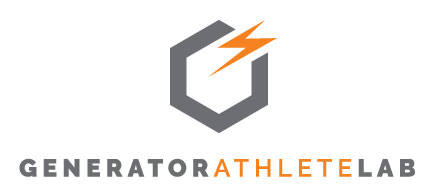The Difference Between Red Light Therapy and Sun Exposure and the Benefits of RLT
Red light therapy and sun exposure are both forms of light exposure, but they differ significantly in their mechanisms, risks, and therapeutic applications. Here’s a breakdown of the key differences and the benefits of red light therapy:
Mechanisms of Action
Red Light Therapy: Uses specific wavelengths of light, typically in the red to near-infrared spectrum (around 630 to 850 nanometers). These wavelengths penetrate the skin and interact with cellular components, primarily mitochondria, triggering various physiological responses such as tissue repair, inflammation reduction, and enhanced cellular function.
Sun Exposure: Involves exposure to natural sunlight, which contains a broad spectrum of wavelengths, including visible light, ultraviolet (UV) radiation, and infrared radiation. While sunlight provides essential benefits such as vitamin D synthesis and mood regulation, excessive or unprotected exposure can lead to adverse effects like sunburn, premature aging, and an increased risk of skin cancer.
Control and Dosage
Red Light Therapy: Offers controlled exposure to predetermined wavelengths and intensities, allowing for precise treatment parameters tailored to individual needs.
Sun Exposure: Varies in intensity depending on factors such as time of day, geographical location, and atmospheric conditions, making it challenging to control the dosage of light received. This lack of control over UV exposure heightens the risk of sunburn and skin damage.
Therapeutic Applications
Red Light Therapy: Researched for its efficacy in treating various conditions, including wound healing, pain management, skin rejuvenation, hair growth, eye health, athletic performance and recovery, joint health, improved mood & sleep quality, and cognitive function.
Sun Exposure: Primarily valued for its role in vitamin D synthesis and mood regulation. However, the risks associated with excessive sun exposure often outweigh its benefits, necessitating caution and sun protection practices to mitigate potential harm.
Benefits of Red Light Therapy
Promotes Wound Healing: Red light therapy has been shown to accelerate the healing process of wounds, cuts, and injuries. By enhancing cellular proliferation, migration, and angiogenesis (formation of new blood vessels), red light therapy can help wounds heal faster and more effectively.
Reduces Pain and Inflammation: One of the well-established benefits of red light therapy is its analgesic (pain-relieving) and anti-inflammatory effects. By modulating inflammatory pathways and promoting tissue repair, red light therapy can alleviate pain associated with arthritis, muscle strains, joint disorders, and chronic pain syndromes.
Improves Skin Health and Rejuvenation: Red light therapy stimulates collagen production and promotes fibroblast activity in the skin, improving skin tone, texture, and elasticity. It can help reduce the appearance of wrinkles, fine lines, scars, and other signs of aging. Additionally, red light therapy has been used to treat acne, rosacea, psoriasis, and other dermatological conditions.
Enhances Muscle Recovery and Performance: Athletes and fitness enthusiasts often use red light therapy to accelerate muscle recovery, reduce muscle fatigue, and improve athletic performance. Red light therapy can support muscle repair and regeneration after intense workouts or injuries by enhancing cellular energy production and reducing oxidative stress.
Supports Joint Health and Mobility: Red light therapy may benefit individuals with joint disorders such as osteoarthritis and rheumatoid arthritis by reducing inflammation, promoting cartilage repair, and improving joint function and mobility. It can help alleviate pain and stiffness associated with these conditions, allowing for better quality of life.
Aids in Hair Growth and Restoration: Red light therapy has shown promise in promoting hair growth and preventing hair loss (alopecia) by stimulating hair follicles, increasing blood flow to the scalp, and prolonging the anagen (growth) phase of the hair cycle. It can be used as a non-invasive treatment option for both male and female pattern baldness.
Supports Cognitive Function and Brain Health: Emerging research suggests that red light therapy may have neuroprotective effects and cognitive benefits. By improving cerebral blood flow, reducing neuroinflammation, and promoting neuronal survival and plasticity, red light therapy may help support brain health, memory, and cognitive function.
Improves Mood and Sleep Quality: Exposure to red light has been shown to positively impact mood, energy levels, and sleep quality. Red light therapy may help regulate circadian rhythms, increase serotonin levels, and improve melatonin production, leading to better sleep patterns and overall well-being.
Overall, red light therapy offers a non-invasive, drug-free approach to promoting health, wellness, and recovery across various physiological systems. However, individual responses to red light therapy may vary, and its efficacy depends on factors such as treatment parameters, duration, and frequency of sessions, as well as the specific condition being addressed. Consulting with a healthcare professional or experienced practitioner can help determine the most appropriate use of red light therapy for individual needs. In conclusion, while both red light therapy and sun exposure involve exposure to light, they differ significantly in their mechanisms, risks, and therapeutic applications. Red light therapy offers targeted stimulation of cellular function using specific wavelengths of light, with potential benefits for wound healing, pain management, skin rejuvenation, and cognitive function. Understanding these differences is essential for optimizing health and well-being while minimizing the risks associated with excessive sun exposure.
*This article was first published in the May 2024 issue of Austin Fit Magazine.
